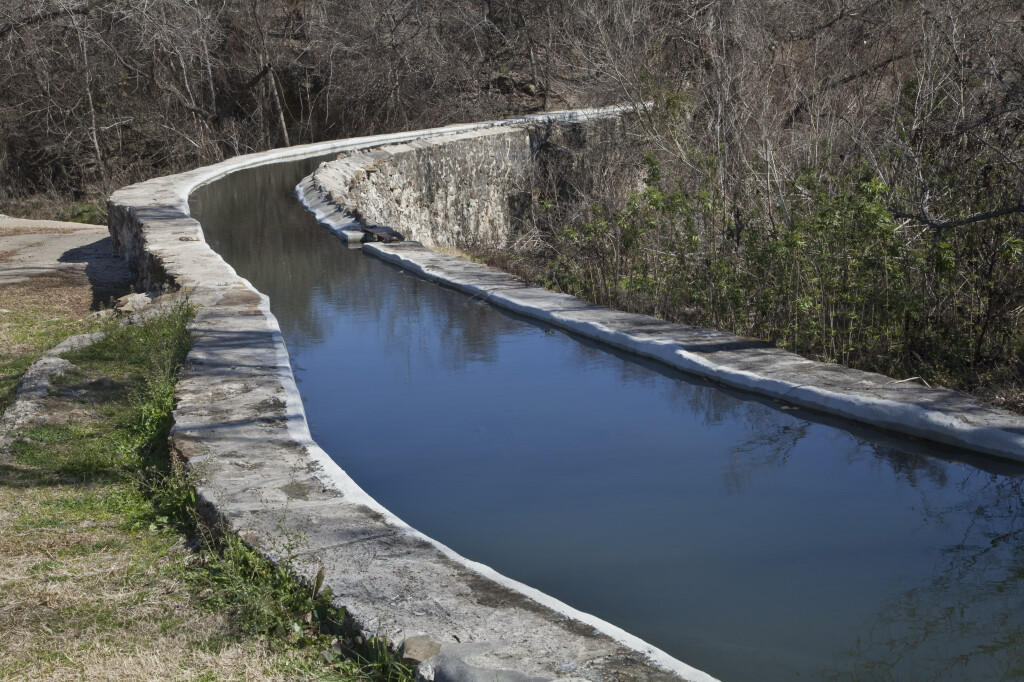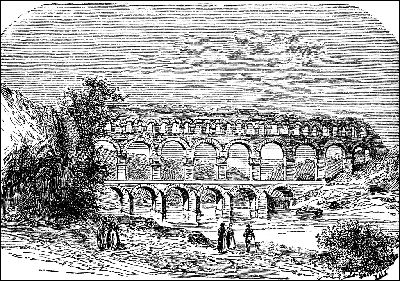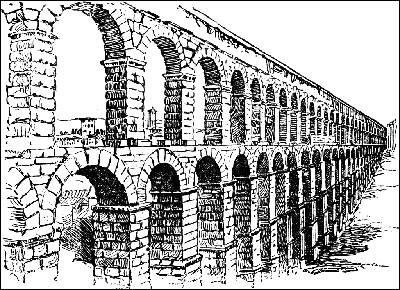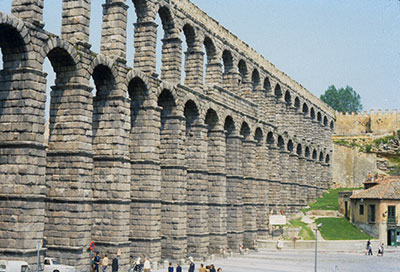The Espada Aqueduct is a part of the irrigation system that supplied water to the Spanish Mission Espada in San Antonio, Texas. The aqueduct was built in the mid-1700s to carry water over Piedras Creek. The Espada acequia fell into disuse in the 1880s, but was restored in 1895. It is still used today to carry water for irrigation.
Explore
Learn more about the Espada aqueduct and its ancient Roman anticedents from these FCIT resources.
San Antonio Missions iBook
San Antonio Missions National Historical Park, San Antonio, Texas
This iBook explores the Spanish attempt to protect their Texas claim by bringing the Christian faith and Hispanic culture to the American Indians there. Primary sources include historic photos and architectural drawings of each mission, document collections about the missions and their decline, and a section about the iconography of the stone carvings at Mission San José. 126 pages + 98 glossary terms 97MB
Espada Aqueduct Gallery
A gallery of phots of the Espada aqueduct from the ClipPix ETC website.
Pont du Gard
The Pont du Gard is an aqueduct and bridge that was built over the Gard River by the Roman Empire. It is located in Southern France. From the ClipArt ETC website.
Segovia ClipArt
Illustration of the Roman aqueduct at Segovia, Spain. From the ClipArt ETC website.
Segovia
Ancient Roman aqueduct at Segovio, Spain from the ClipPix ETC website.
From the San Antonio Missions iBook
Three images from the San Antonio Missions iBook. Click to enlarge.
Panorama of the Espada Aqueduct
This photo shows the side view of the aqueduct with Piedras Creek flowing through the arches of the aqueduct.
Map of Espada Aqueduct Area
Map shows the direction of water flowing through he Espada aqueduct. The Espada acequia is still used by farms today to irrigate crops. The original 1973 Historic American Buildings Survey drawing that includes this map and the north elevation of the aqueduct is available on the ClipPix ETC website.
View of Aqueduct in 1936
This photo shows what the aqueduct looked like in 1936. Historic American Buildings Survey photo by Arthur W. Stewart.
Roy Winkelman is a 40+ year veteran teacher of students from every level kindergarten through graduate school. As the former Director of FCIT, he began the Center's focus on providing students with rich content collections from which to build their understanding. When not glued to his keyboard, Dr. Winkelman can usually be found puttering around his tomato garden in Pittsburgh. Questions about this post or suggestions for a future topic? Email me at winkelma@usf.edu. To ensure that your email is not blocked, please do not change the subject line. Thank you!
FCIT Newsletter
Each month FCIT publishes a newsletter with short articles on teaching and learning with technology, using digital content in the classroom, and technology integration. Subscribe today! The subscription form will open in a new window. When you have subscribed, you can close the new window to return to this page.









